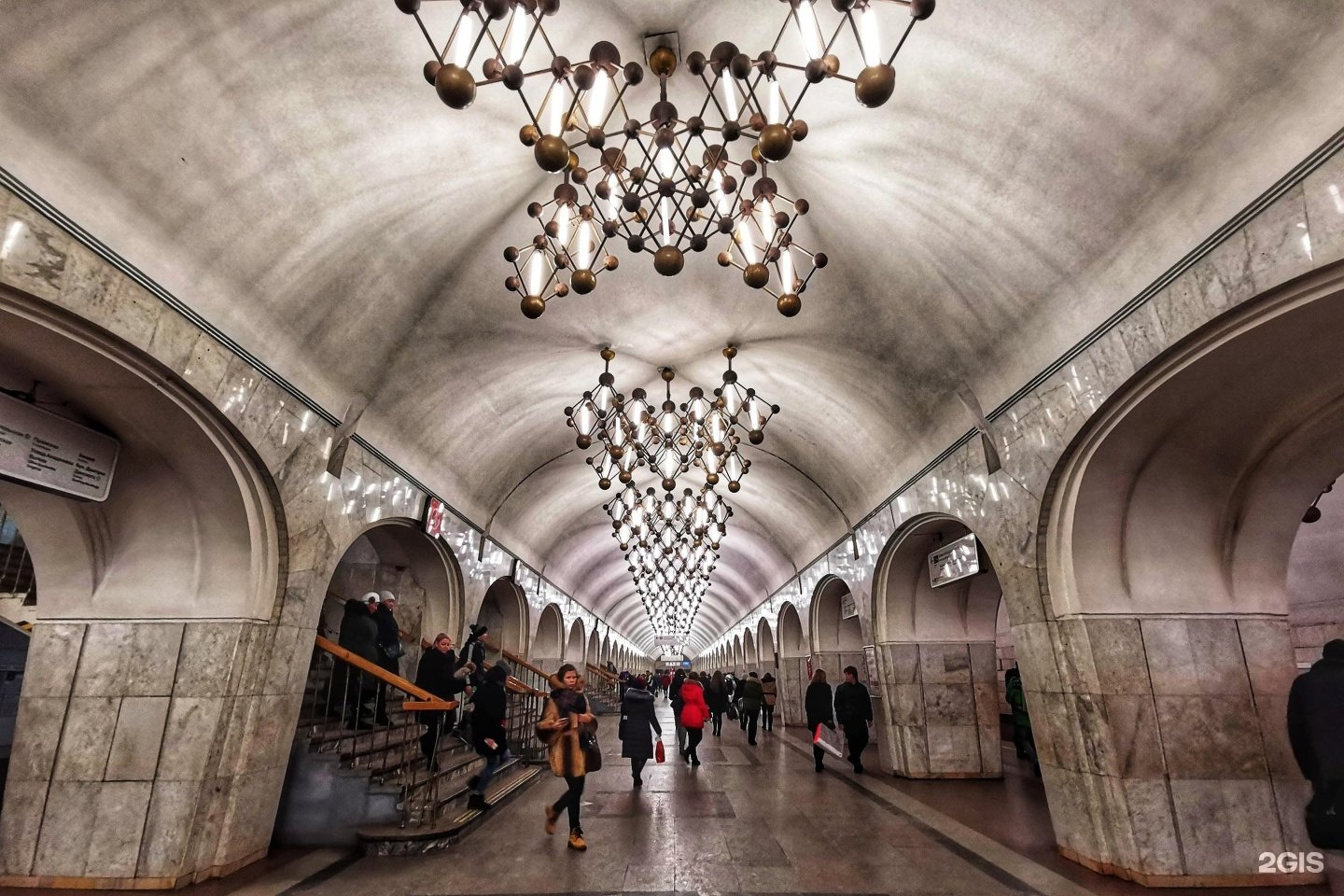The Mendeleevskaya Metro Station opened on December 31, 1988 as part of a new section of the future Serpukhovsko-Timiryazevskaya line. From “Chekhovskaya” to Savelovskaya.” Many Muscovites who lived in those parts and even a little further were really looking forward to the commissioning of this section. Initially, it was planned to be commissioned back in the mid-1980s, but difficult geological conditions prevented it, and towards the end of decades and insufficient funding, although the tunnelers themselves fulfilled their duty selflessly, trying with all they might to make it before the new year of 1989. It was then customary to open stations in the last days of December.
If we talk specifically about Mendeleevskaya, then a very exciting story is connected with its construction. During the construction of the station, in November 1986, a rock collapse occurred at a depth of 20 meters. The situation was difficult: nearby there was a huge quicksand (a mixture of water and sand). It could flood already erected structures. In the worst case scenario, communications would also fall into the resulting crater: gas pipeline, water supply, sewer, electric cables and even tram tracks on Sushchevskaya Street. Fortunately, thanks to the incredible efforts of the builders, this was avoided.
Snow-white temple in honor of the science of substances
Some believe that Mendeleevskaya Metro Station resembles the “Pushkinskaya” Tagansko-Krasnopresnenskaya line. But if you take a closer look, you will understand: although the stations are structurally similar, their decor and finishing are very different. The construction project was developed by architect Nina Aleshina. She created an image that was somewhat reminiscent of the Circle Line stations. Here, of course, there were no more monograms, stucco moldings and stained glass windows. But on the platform there is a feeling of spaciousness and a certain monumentality. The feeling arises due to two things. Firstly, the vaults of the central hall are higher than those of the side platforms. Secondly, the columns and track walls were decorated with snow-white marble. The end of the platform is lined with it.
The Mendeleevskaya Metro Station received its name in honor of the Chemical-Technological Institute, which is located nearby, on Miusskaya Square. He also bears the name of Dmitry Ivanovich. However, the decor of the station was dedicated not so much to the personality of Mendeleev himself, but to chemistry and science in general. The main highlight of the platform was, of course, the lighting. In the central hall, on the vaults there are chandeliers in the form of a crystal lattice. The balls in it symbolize atoms. It looks beautiful in real life. Photos, unfortunately, do not convey this fully.
Similar lamps are located above the side platforms. Only their size is a little smaller. In the central part of the station, on the track walls, 8 round marble panels (4 on each side) were placed. What is depicted on them cannot be understood by the common man. Architectural guidebooks write that the deformation electron density of different molecules; some physical and chemical process; or the atomic and molecular structure of matter.
The fascinating world of chemistry in Mendeleevskaya Metro Station
Interesting panels were made at both ends of the platform. Above the exit to the city they depicted a growth chamber for artificial crystals and the crystals themselves. On the opposite side is a whole composition called “Mendeleev’s Dream”. In the center is the scientist himself. By the way, his eyes are open. Therefore, it is not entirely clear where this name came from. Around Dmitry Ivanovich there are different chemical elements from the periodic table.
The floor of the Mendeleevskaya Metro Station was paved with dark, red and black granite. A pattern in the form of squares was made along the central part of the platform. There are also interesting details in the decoration of the columns. The transition to the Circle Line was made using stairs. But they were placed very low.
Initially, the exit to the city was an ordinary underground passage. However, in the 2000s, a glass office and shopping center appeared and absorbed the structure. In the underground passage you can see the “Sympathy” monument. It was installed in 2007, in memory of a murdered dog named Boy. Metro employees sheltered a dog at the station. And in 2002, he was killed by a Muscovite woman, who was later declared insane.



